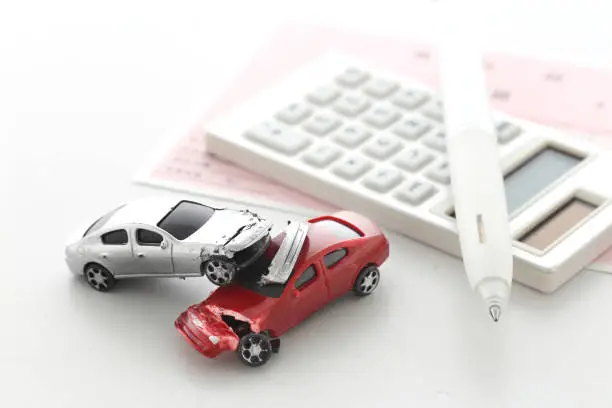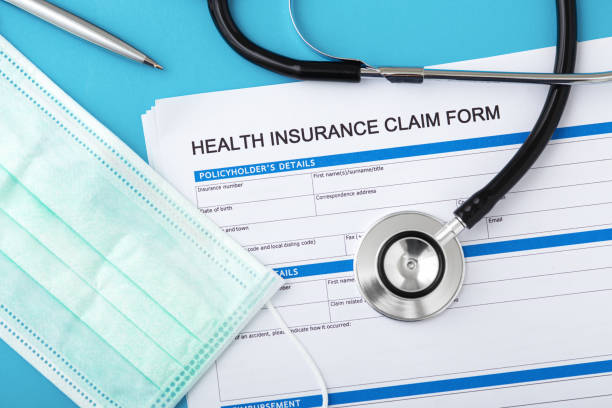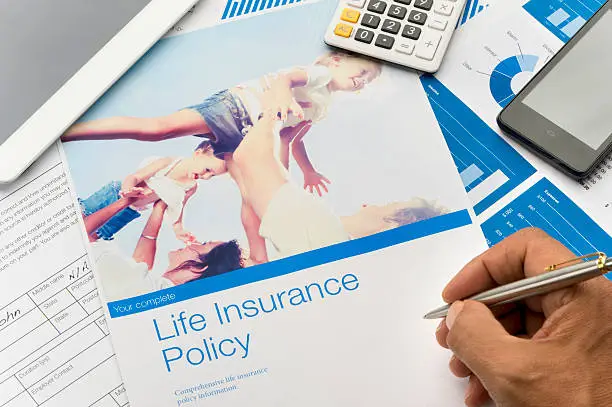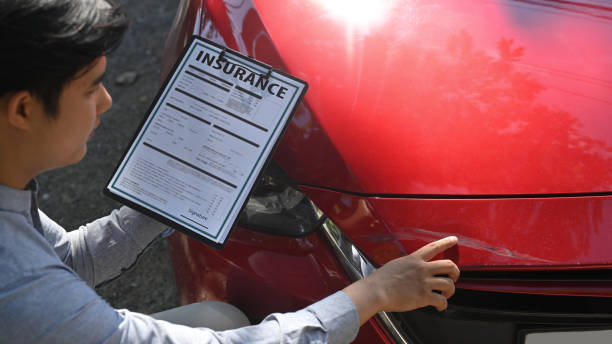
What is Car Insurance? A Step-by-Step Overview 33
Car insurance is a contract between you and an insurance company that protects your vehicle against financial losses in case of accidents, theft, or damages.
It covers repair costs, medical expenses, and liability for damages caused to others. Car insurance is mandatory in most countries, ensuring financial safety on the road.
Public types contain liability, collision, and full coverage. Picking the right policy be contingent on your needs and budget.
Why Is Car Insurance Important?
Imagine driving your car on a regular day, and quickly, an startling accident transpires. Scary, right? This is where car insurance steps in as your financial shield, ensuring you’re not left with a massive bill. But why is it so important? Let me halt it down for you in meek terms.
1- It Protects Your Finances
Accidents can be expensive. Repairing your car or covering medical bills can drain your savings. With car insurance, you won’t have to worry about these costs because it covers the expenses for you.
2- It’s a Legal Requirement
Most countries and states make car insurance mandatory. Driving without it can lead to fines, penalties, or even legal trouble. Think of it as following the law while protecting yourself at the same time.
3- It Covers Third-Party Damages

What if you fortuitously hit somebody’s car or stuff?
You can be held liable for the costs.
Car insurance ensures these costs are covered so you don’t have to pay out of your pocket.
4- Peace of Mind
Accidents are unpredictable, and no one likes to worry about “what ifs.” Having car insurance lets you drive confidently, knowing you’re prepared for any unexpected situations.
5- Protection Against Theft or Natural Disasters
Cars aren’t just at risk on the road. Theft, fire, floods, or even vandalism can cause major losses. Comprehensive car insurance provides coverage for such scenarios, ensuring you’re financially secure no matter what happens.
6- It’s an Investment in Your Safety
Insurance companies often provide roadside assistance, towing services, and even car replacement options. These added doles make your driving experience strain-free and safer.
What Are the Benefits of Car Insurance?
Car insurance is like having a trusted partner to protect you and your car. Here are four key benefits that everyone should know:

1- Financial Protection in Accidents
If your car is hurt in an accident, car insurance helps shelter the mending prices. It also pays for damages caused to others, saving you from huge expenses.
2- Coverage Against Theft and Natural Disasters
If your car gets stolen, damaged by fire, floods, or other disasters, car insurance ensures you don’t face a financial burden. It’s like taking a safety net for startling situations.
3- Medical Expense Coverage
In case of an accident, car insurance helps pay for medical treatments for you and others involved. It’s a huge relief during stressful times.
4- Peace of Mind While Driving
Knowing you’re protected lets you drive without constant worry. Whether it’s a minor scratch or a major mishap, car insurance has your back.
How does car insurance work?
Car insurance is your safety net on the road, designed to protect you financially in case of accidents, theft, or other unexpected events. Let’s break it down step by step:
1- You Choose a Policy
When you purchase car insurance, you choice a rule that wears your needs. There are different types of coverage, like:
Obligation cover: Refuges costs to others if you’re at fault.
Full insurance: Keeps beside theft, normal ruins, and more.
Smash insurance: Pays for keeps to your car after an accident.
You can also enhance add-ons, like curb support or payment car refund.
2- You Pay a Premium
To save your rule lively, you pay a steady quantity termed a premium. This can be monthly, quarterly, or annually. The premium amount depends on factors like your car, driving history, and the coverage you choose.
3- You File a Claim After an Incident
If rather ensues—like an accident before theft—you file a right with your insurance company. This means you report the incident, provide evidence (like photos or a police report), and request financial coverage.
4- The Insurer Reviews Your Claim
The insurance company investigates the claim to ensure it’s valid. They might assess the damage, check documents, or talk to witnesses.
5- You Receive Compensation
Once your claim is approved, the insurance company pays for the damages or costs, according to the terms of your policy. This could be repairing your car, covering medical bills, or reimbursing stolen items.
Types of car insurance
1- Liability Insurance – Covers damages or injuries to others when you’re at fault.
2- Collision Insurance – Pays for repairs or replacement of your car after an accident.
3- Complete Insurance – Refuges non-collision actions like theft, fire, or normal disasters.
4- Private Wrong Guard (PIP) – Covers health outgoings for you and your passengers.
5- Uninsured/Underinsured Motorist Coverage – Protects you if the other driver lacks insurance.
6- Gap Insurance – Covers the difference between your car’s value and the loan amount if totaled.
7- Roadside Assistance Coverage – Provides help for breakdowns, like towing or fuel delivery.
8- Charge Refund Coverage – Pays for a rental car while your bus is being repaired.
How to file a claim
Getting into a car accident can be stressful, but knowing the steps to file an insurance claim can make the process smoother. Here’s what you need to do:
- Ensure Safety First
Make sure everyone involved is in a safe location. If the accident is severe, call 911 for medical help. Always contact the police to report the incident, regardless of the severity. - Document the Scene
Take clear photos of the damage to your vehicle and any other vehicles involved. These images will be essential for your claim. - Avoid Admitting Fault
Never admit liability, even if you think you might be at fault. Let your insurance company investigate and determine responsibility based on the accident details. - Gather Necessary Documents
Collect all the required paperwork for filing a claim. Typically, this includes a “proof of claim” form and a copy of the police report. Your insurance company or agent will guide you on the specifics. - File the Claim
Reach out to your insurer to start the claims process. You can do this by calling, using their online portal, or through their mobile app. Some providers may also require you to contact your insurance agent. - Track Your Claim
Stay updated on your claim’s progress by regularly following up with your claims specialist. Make sure to provide any additional information they request promptly.
Pro Tip: Before filing a claim, double-check with your insurance provider about their specific requirements. This can help you avoid delays or complications during the process.
How much car insurance do you need?
To drive legally, most states require you to carry minimum amounts of liability insurance. These are regularly written as three numbers, like 50/100/25, and they denote coverage in thousands of dollars for:
1- Bodily injury per person – The maximum payout for one injured person.
2- Bodily injury per accident – The total payout for all injured people in one accident.
3- Property damage per accident – The payout for damage to others’ property.
What Does 50/100/25 Mean?
If you’re at fault in an accident:
$50,000 covers medical bills for one person.
$100,000 is the maximum total for everyone injured in the accident.
$25,000 is the maximum for property damage, like fixing someone’s car.
Why Are State Minimums Risky?
Some states, like California, have low minimum requirements (e.g., 15/30/5). But here’s the problem:
Accidents often cost more than $5,000 in property damage, which means you’ll pay the difference out of pocket.
Low bodily injury limits could leave you stuck with huge medical or legal bills if the costs go over your policy’s payout limit.
How to Protect Yourself?
Insurance experts recommend buying coverage higher than the state minimum. For example, upgrading to 100/300/100 gives you much better financial protection.
Remember, minimum liability does not cover your car. To protect your vehicle in accidents, consider adding comprehensive and collision coverage.
How to save on car insurance
Car insurance can take a chunk out of your budget, but there are plenty of smart strategies to cut those costs without compromising coverage. Here’s how you can save:
1- Shop Around for Quotes
Don’t settle for the first quote you get.
Compare rates from at least 3-5 insurers to find the best deal.
Use judgment websites or work with an free agent.
2- Bundle Your Policies
Combine your car insurance with home or renter’s insurance.
Many insurers offer discounts for bundling multiple policies.
3- Raise Your Deductible
Select for a higher deductible to lower your premium. Make sure you have plenty hoard to cover the deductible in case of an accident.
4- Maintain a Clean Driving Record
Avoid accidents and traffic violations.
A good driving history can qualify you for significant discounts.
5- Ask About Discounts
Look for discounts for good students, military personnel, or safe drivers.
Many companies offer discounts for low mileage, installing anti-theft devices, or completing defensive driving courses.
6- Reassess Your Coverage
If your car is older, ponder reducing accident or complete coverage.
Make sure you’re not over-insured but don’t skimp on necessary coverage.
7- Pay Annually or Semi-Annually
Paying your premium upfront can save you money on installment fees.
8- Monitor Your Credit Score
A good credit score often means lower insurance rates.
Pay mouths on time and lessen debt to rally your credit.
9- Use Usage-Based or Pay-Per-Mile Insurance
Some insurers offer programs where your premium is based on how much and how safely you drive.
This can be ideal if you don’t drive much.
10- Review Your Policy Regularly
Life changes, like getting married or moving, can affect your rates.
Make sure your policy reflects your current situation for potential savings.
What do I need to buy car insurance?

Before purchasing a car insurance policy, you’ll need to gather some essential information. Here’s a checklist of what insurers typically ask for:
- Driver’s License:
- Provide a valid driver’s license for yourself and any other drivers you plan to list on your policy.
- Vehicle Registration:
- This helps insurers verify your car’s details, including ownership.
- Vehicle Identification Number (VIN):
- The VIN is like your car’s fingerprint. It’s a unique code that insurers use to identify your vehicle.
- Social Security Number (Optional):
- Some insurers require this for identity verification or credit checks, depending on state regulations.
- Banking Information:
- For payment setup, you’ll need bank account details or a credit/debit card.
- Lienholder or Leasing Company Details:
- If you’re financing or leasing your car, your lender may have specific coverage requirements.
- Declarations Page from Current Insurance (if applicable):
- This document outlines your existing coverage and helps insurers create a comparable quote.
Steps to Get Car Insurance
1. Gather Your Documents
Having all the required information ready will speed up the process and ensure accurate quotes.
2. Compare Multiple Quotes
Don’t settle for the first option you find! Use online tools or contact multiple insurers to compare quotes. Insurers often offer discounts for:
- Good driving history
- Bundling home and auto insurance
- Paying premiums annually instead of monthly
- Vehicles with safety features
3. Be Honest About Your Information
While you can get quick quotes with less information, these estimates might not reflect the final price. Insurers will verify your driving record, any past accidents, or violations during the underwriting process. Providing accurate details upfront prevents surprise premium changes later.
4. List All Licensed Drivers in Your Household
Insurance companies generally require you to include all licensed drivers living in your household, even if they rarely drive your car. Leaving someone out could lead to policy issues later.
5. Understand Coverage Requirements
Check your state’s minimum insurance requirements. If you have a loan or lease, your lender may require additional coverage, such as collision or comprehensive insurance.
Pro Tip: Save Money by Shopping Smart
- Look for available discounts, like those for safe drivers, students, or military personnel.
- Bundle your car insurance with home or renters insurance for extra savings.
- Opt for higher deductibles if you’re comfortable paying more out-of-pocket in case of a claim.
Why Accuracy Matters When Getting Quotes
Giving incomplete or incorrect information can lead to unexpected surprises. For instance:
- Unreported accidents or traffic violations will show up during underwriting and could increase your premium.
- Listing the wrong drivers or skipping details about your vehicle could void discounts or result in higher costs.
By being upfront, you’ll get a more accurate quote and avoid any changes when it’s time to finalize your policy.
Which type of car insurance is best?
Third-Party Liability Insurance
This is the basic and mandatory insurance required in most countries.
What it covers: It only pays for damages caused to another person’s car, property, or injuries.
Who should choose this?
People on a tight budget.
Those driving older cars with low resale value.
If you’re just meeting legal requirements.
Downside: It doesn’t cover your car or personal injuries.
Comprehensive Insurance
This is an all-rounder policy offering the highest level of protection.
What it covers:
Damages to your car (accidents, theft, fire, natural disasters).
Third-party liability.
Personal accident cover (in some policies).
Who should choose this?
New car owners.
People who want peace of mind and don’t want to worry about repair costs.
Those living in areas prone to theft or extreme weather.
Downside: It’s more expensive than basic plans.
Third-Party, Fire, and Theft Insurance
This is a middle-ground option between basic and comprehensive.
What it covers:
Third-party damages.
Fire and theft of your car.
Who should choose this?
People who want more than just basic coverage but don’t want to pay for full comprehensive insurance.
Downside: It doesn’t cover accidental damages to your car.
Pay-As-You-Go Insurance
Also called usage-based insurance, it charges you based on how much you drive.
What it covers: Similar to comprehensive or third-party insurance, but priced by mileage or driving behavior.
Who should choose this?
Occasional drivers.
People who want affordable rates for limited usage.
Downside: If you drive a lot, it might not save you money.
Personal Accident Cover (Add-On)
This isn’t a full insurance plan but an important add-on.
What it covers: Compensation for medical expenses or death caused by a car accident.
Who should add this?
Anyone concerned about their safety or their family’s financial security after an accident.
So, Which One Is Best for You?
If you only want legal coverage: Go for Third-Party Liability.
If you want maximum protection: Choose Comprehensive Insurance.
If you need a budget-friendly middle option: Opt for Third-Party, Fire, and Theft.
If you drive occasionally: Try Pay-As-You-Go Insurance.
Pro Tip:
Before buying, always compare plans, read the fine print, and check the reputation of the insurance provider. Look for claim settlement ratios and customer reviews to ensure you’re making the right choice.
What are the top 3 types of insurance?
Insurance is essential to protect yourself from unexpected financial losses. While there are many types of insurance, here are the top 3 types that are most important for everyone:

1. Health Insurance
- Why it’s important: Medical treatments can be expensive, and health insurance ensures you don’t face financial stress during emergencies.
- What it covers:
- Hospitalization costs.
- Doctor consultations and tests.
- Surgery and critical illness treatments.
- Who needs it:
- Everyone, especially families with dependents or individuals with health risks.
- Tip: Choose a policy with cashless treatment options and wide hospital coverage.

2. Life Insurance
- Why it’s important: Life insurance provides financial security to your family in case of your untimely demise.
- What it covers:
- A lump sum payout (death benefit) to your beneficiaries.
- Some policies include savings or investment options.
- Who needs it:
- Breadwinners and anyone with dependents.
- People looking for tax-saving investments.
- Tip: Term life insurance is affordable and offers high coverage.

3. Car Insurance
- Why it’s important: Car insurance protects you from financial losses due to accidents, theft, or damage to your vehicle. It is also mandatory in most countries.
- What it covers:
- Third-party liability (injury or damage to others).
- Repair costs for your car (comprehensive coverage).
- Protection against theft or natural disasters.
- Who needs it:
- All vehicle owners, especially those driving new or expensive cars.
- Tip: Comprehensive insurance offers the best protection for your car and peace of mind.
Conclusion
Car insurance is more than just a legal requirement; it’s a safety net that protects you from financial burdens caused by accidents, theft, or damages. Choosing the right car insurance ensures you’re not left stranded when the unexpected happens. Whether it’s basic third-party coverage or comprehensive protection, evaluate your needs, compare plans, and select a policy that provides the best value for your peace of mind. Remember, a well-insured car is a worry-free ride! 🚗✨
Frequently asked questions
What car insurance company has the best coverage types and rates?
It depends. Car insurance companies can use about a dozen factors to calculate your premium, including your location, driving history and vehicle type, or even your credit history in some cases.
For this reason, car insurance is almost like a fingerprint — no one policy will be exactly the same as another. That’s why one of the best ways to find the best company for you is to shop around for free car insurance quotes and compare the options.
Do I Need Car Insurance Before Buying a Vehicle?
Yes, you need car insurance before buying a vehicle if you plan to drive it. Most states, dealerships, and lenders require proof of insurance. To avoid delays, arrange a policy beforehand or ask your insurer about temporary coverage for new cars.
How Do I Cancel My Car Insurance Policy?
Contact your insurer to start the process. Some companies accept verbal requests, while others require written ones. You may need to provide proof of new insurance or canceled registration. Check for any fees or refunds and ensure continuous coverage to avoid risks.


